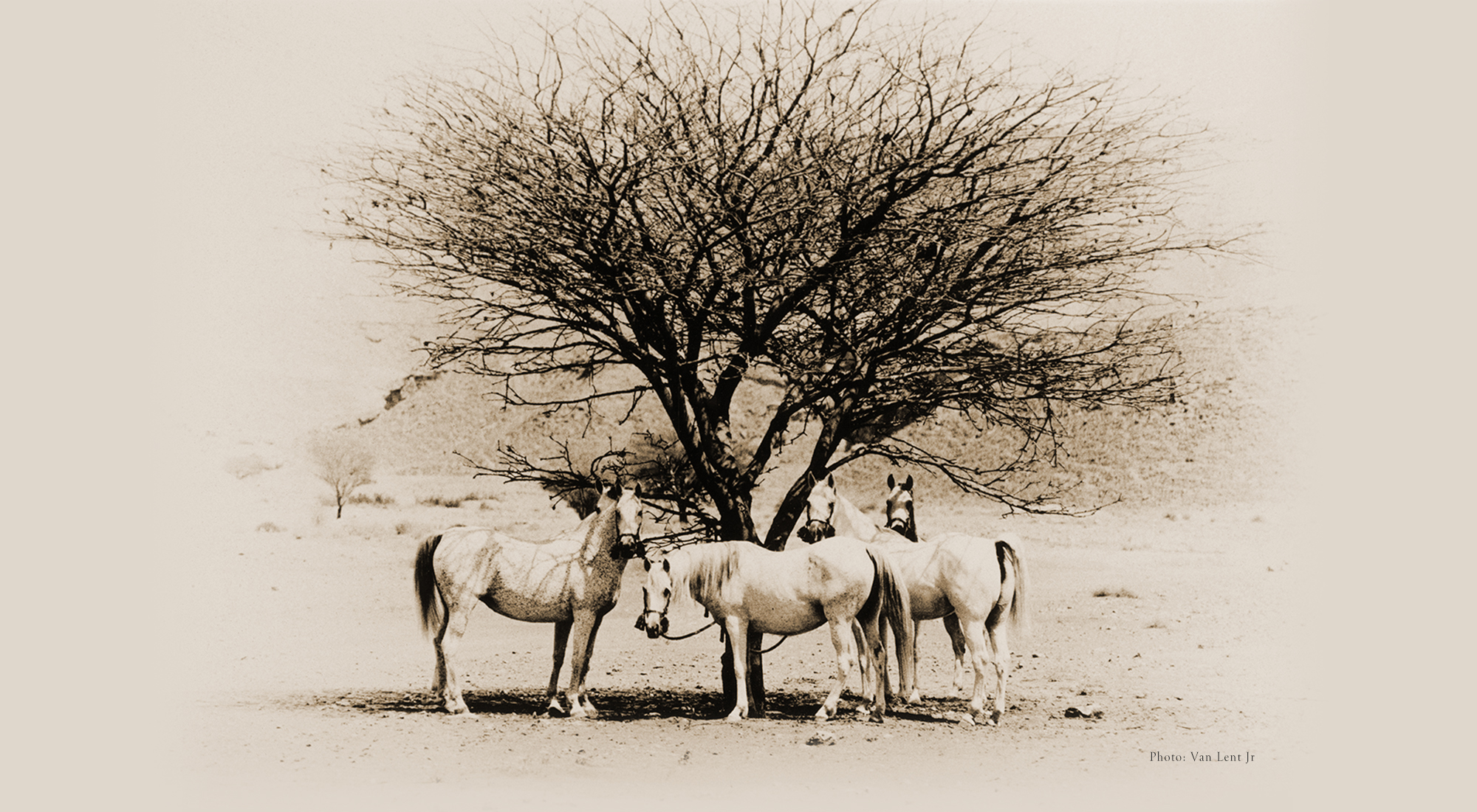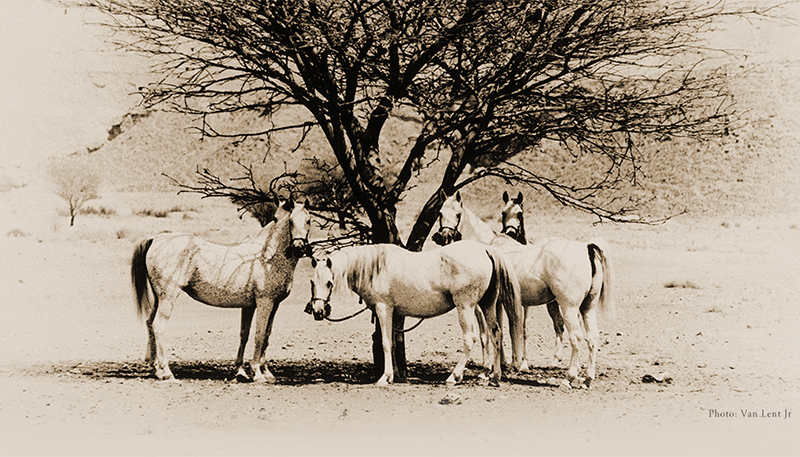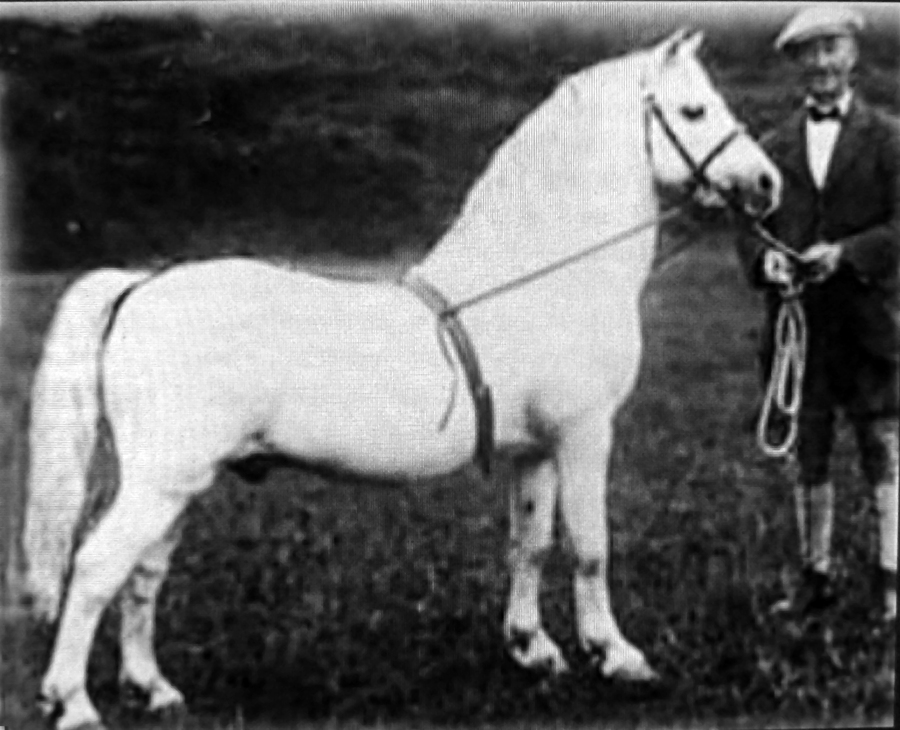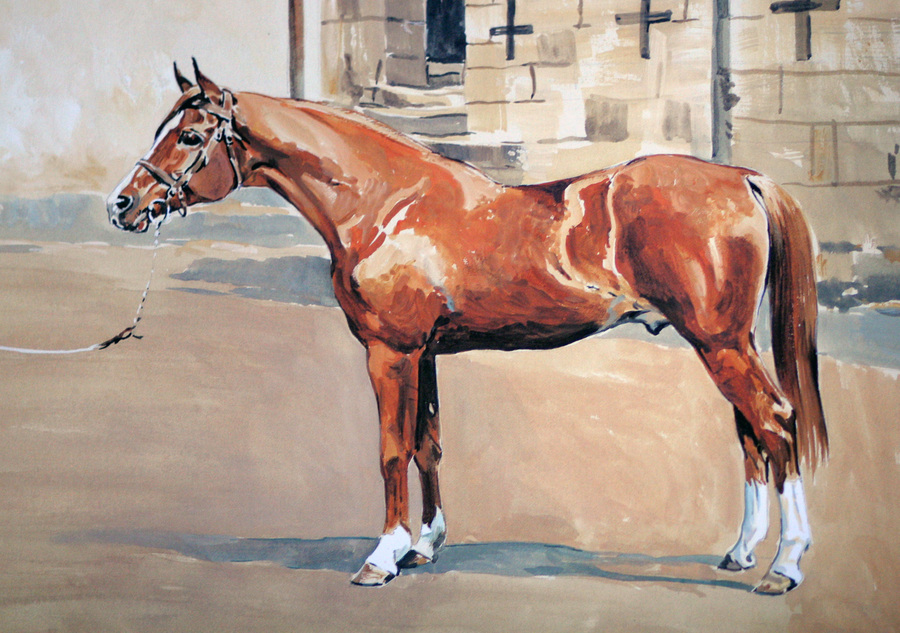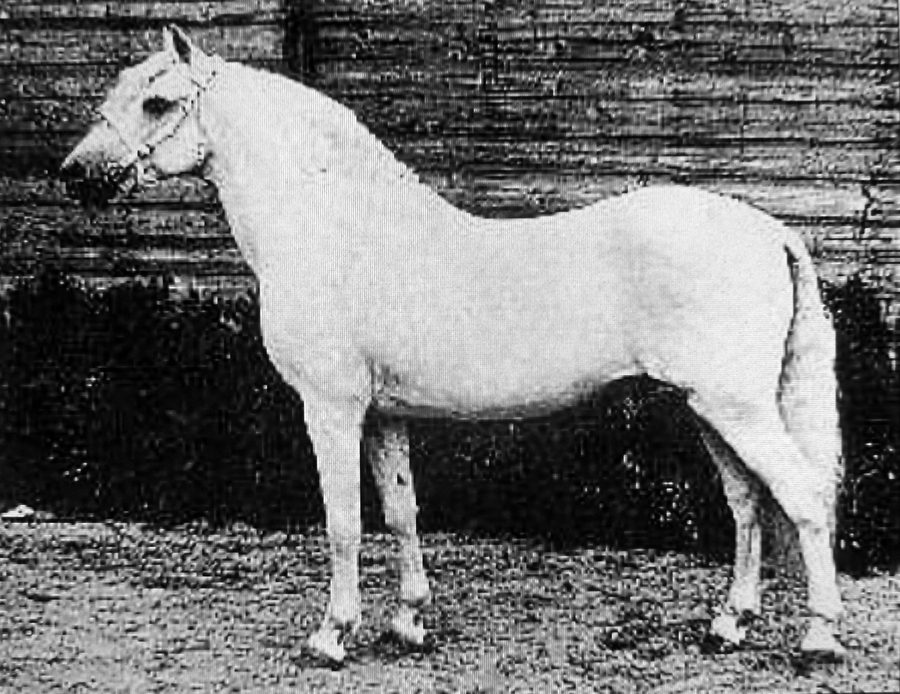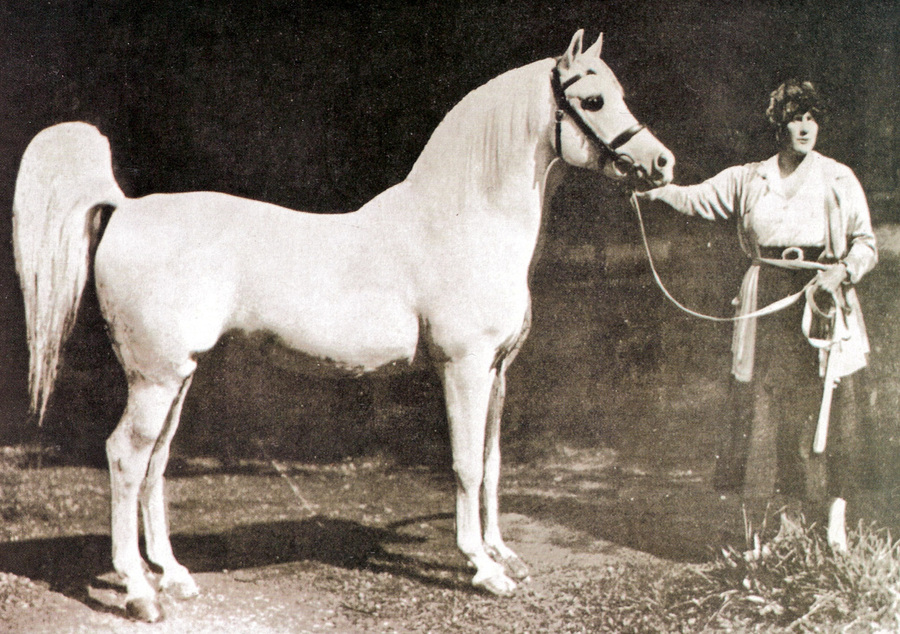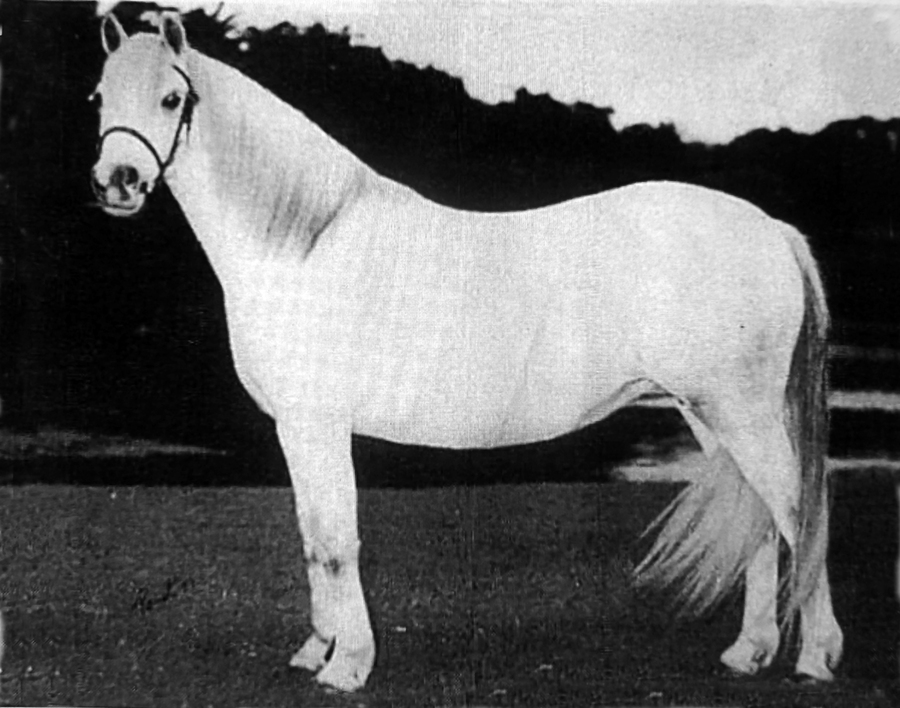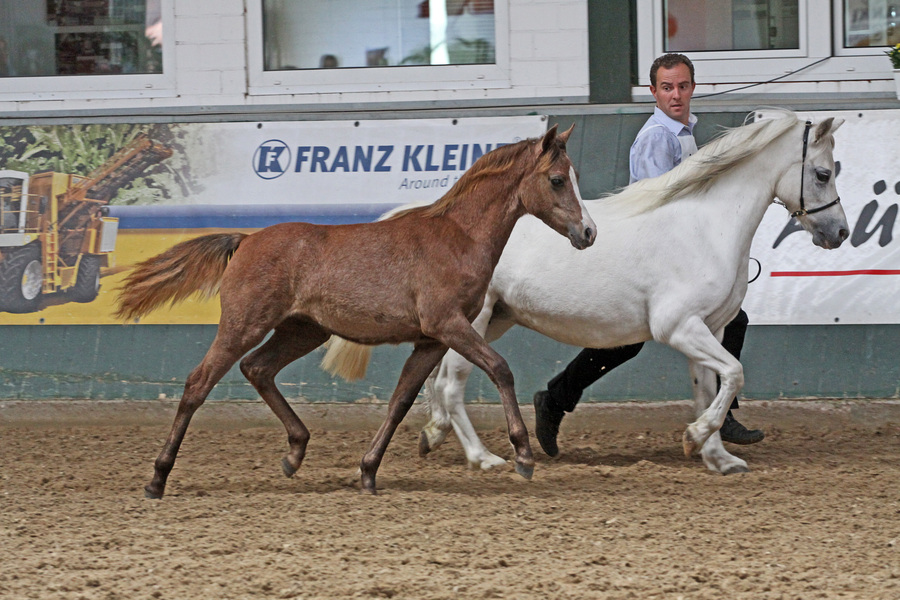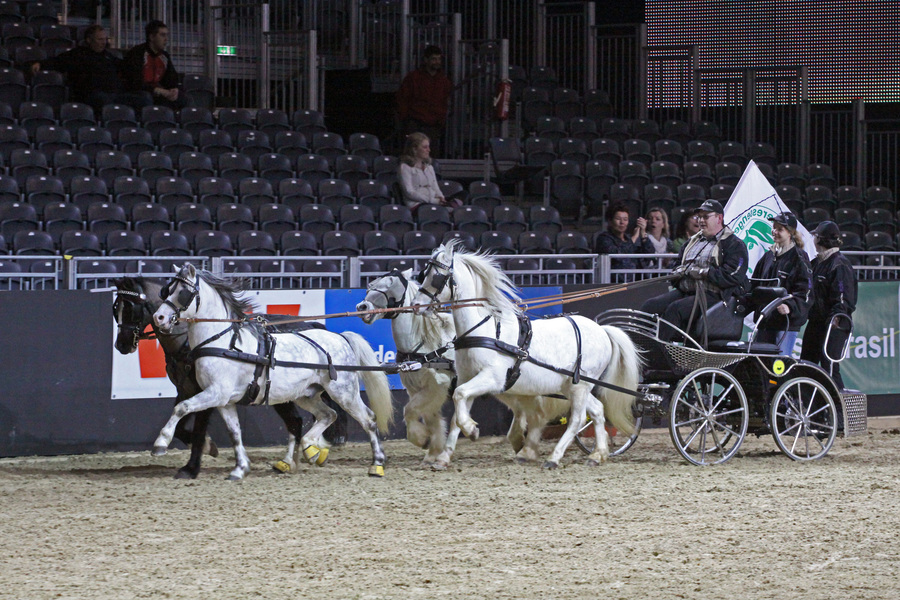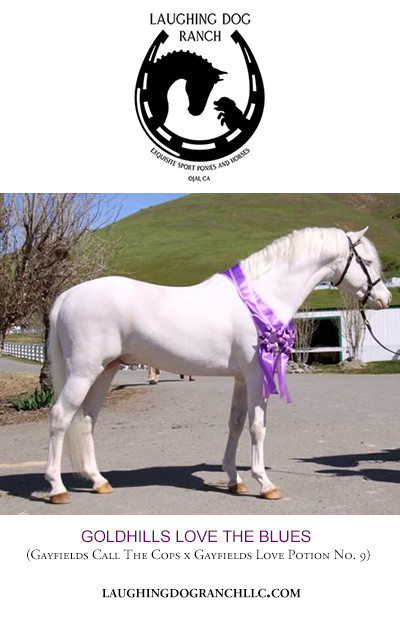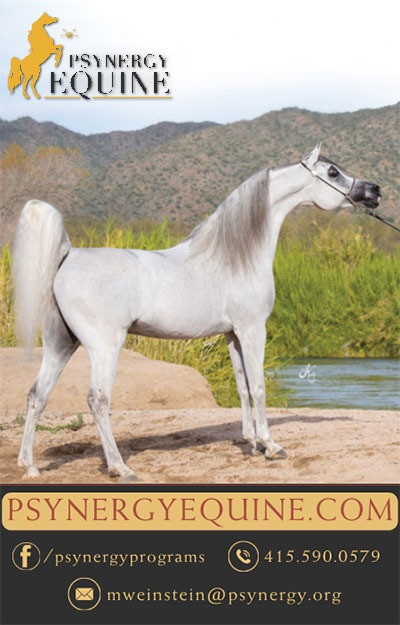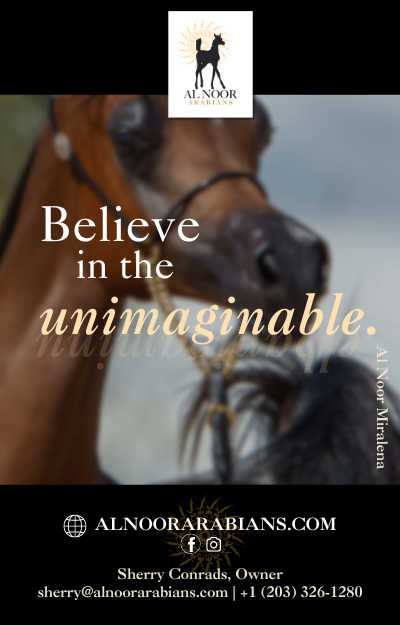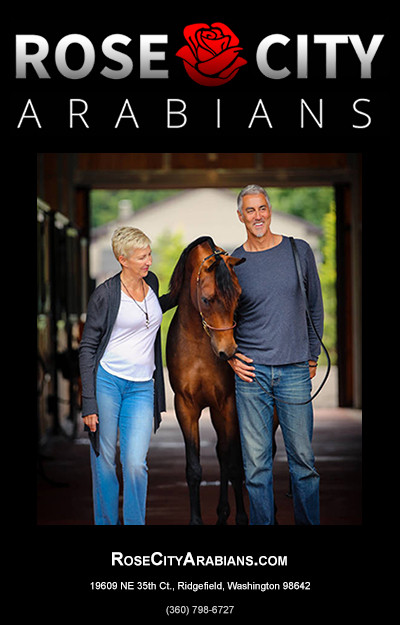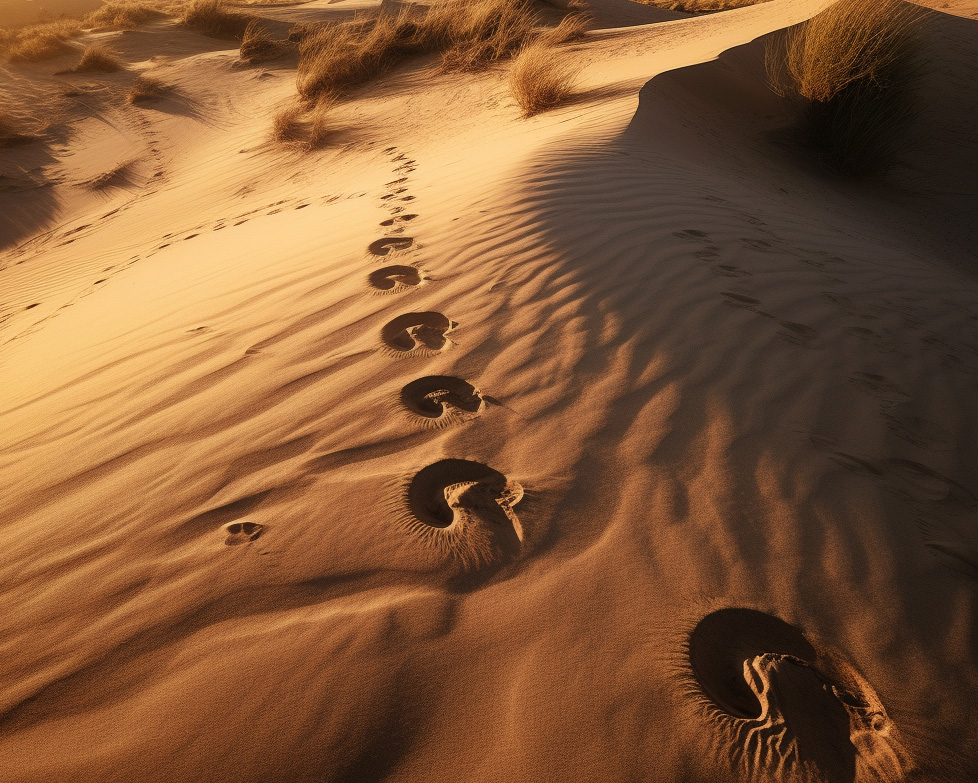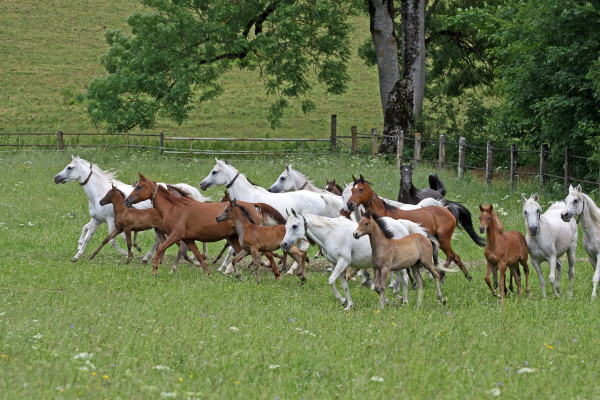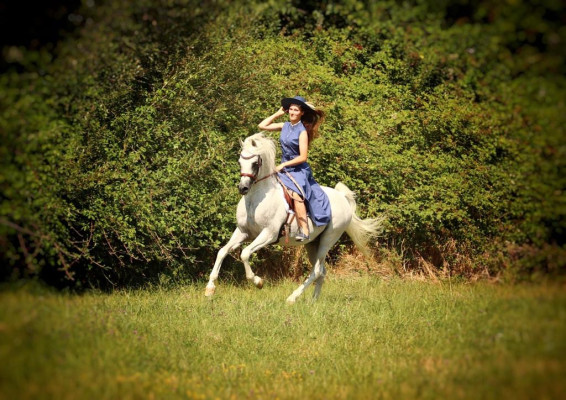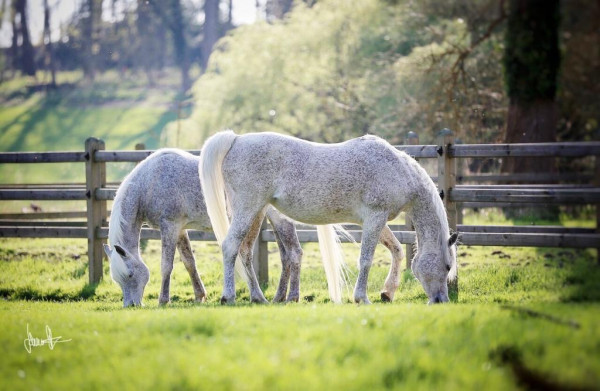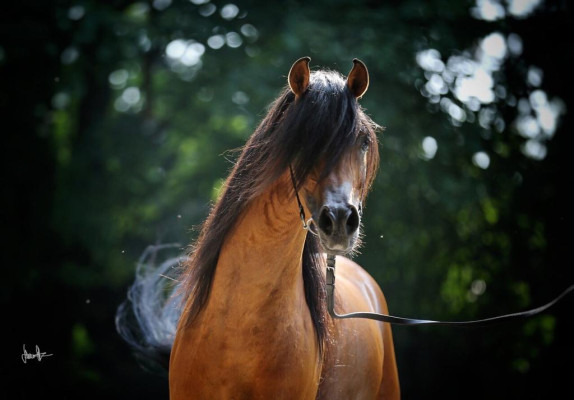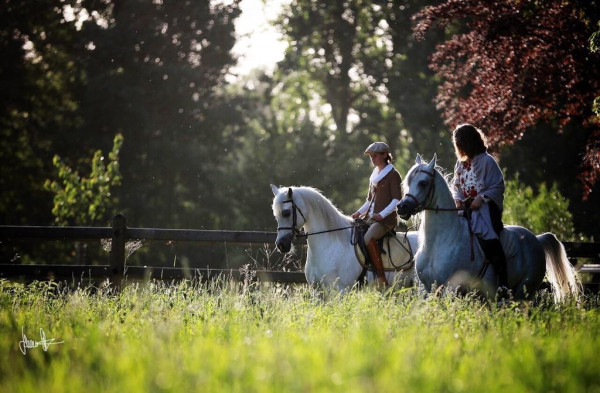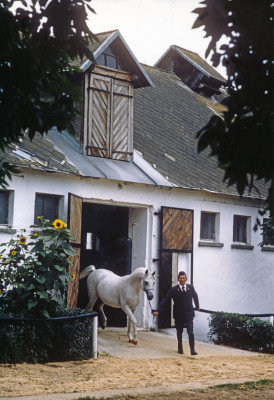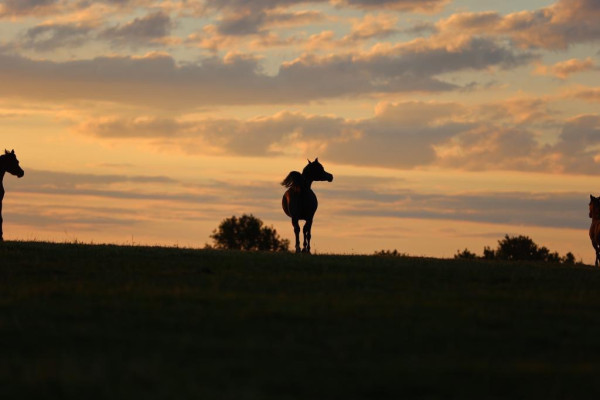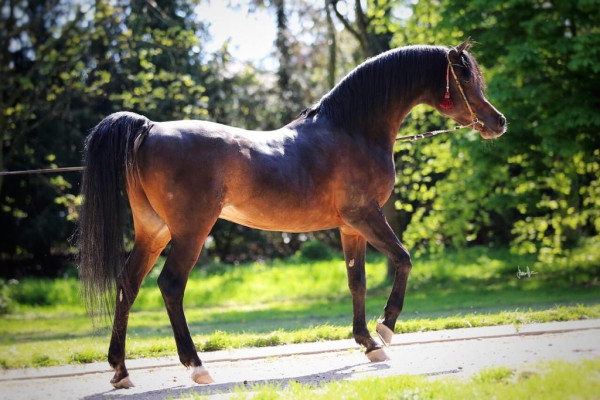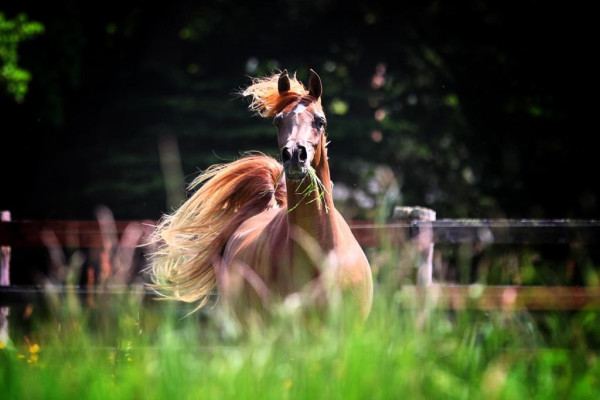Foundations: Arabian Influence in Other Breeds - The Welsh Pony
by Betty Finke
The Welsh pony is the original miniature Arabian. It has been called that by its own breeders and breed society, and it is the only pony breed that lists a dished profile as part of the standard. There’s a reason for it, too: the Arabian played a vital part in shaping the breed as we know it today, from ancient times well into the 20th century.
Great Britain is home to a larger number of native pony breeds than any other European country. Collectively known as the moorland and mountain breeds, they are all local breeds named after their area of origin: Welsh, Exmoor, Dartmoor, New Forest, Fell, Dales, Highland, and Shetland. Ireland’s Connemara belongs in the same category. All these breeds, though most likely descended from the same indigenous stock dating back to the time of the Celts, are very distinct from each other today, and have been influenced to some degree by Arabian blood. In some cases – especially the northern breeds – the Arabian influence is minimal and barely noticeable. It is stronger, and much more recent, in the Dartmoor and the Connemara, and strongest as well as most obvious in the Welsh Pony. So obvious, in fact, that the Welsh Pony is often referred to as a “miniature Arab,” frequently having a very Arabian-type, dished head. Let’s have a closer look.
Ancient Origins
Welsh Ponies come in different varieties, from the diminutive Welsh Mountain Pony (also known as Section A, around 12.2 hh) and its slightly bigger cousin, the Welsh Pony (Section B) to the much larger and more powerful Welsh Cob (Sections C and D).
The Welsh Mountain is considered closest to the original wild ponies that populated the Welsh countryside in the past, from which all other types were developed. The Welsh Cob is a later division and more strongly influenced by Hackney blood rather than Arabian. Some Hackney blood, as well as Thoroughbred, is also found in Section A and B ponies, but they have the strongest admixture of Arabian blood. These two types, distinguished only by size, are the most widely distributed and most popular of the mountain and moorland breeds.
Modern research has shown that the Romans brought Caspian horses with them to Britain, which gave a first infusion of oriental blood into the native pony population. The Caspian is an ancient miniature horse breed (not pony) from Persia with oriental characteristics. Recent DNA research indicates that these horses may have been the ancestors of all oriental horses, including Arabians.
The first recorded imports of Arabian horses to Britain date back to the 11th century and King Richard I (the Lionhearted), who brought back horses from the Crusades. It is believed that some of these horses may have been involved in the development of the breed, and that later imports of heavier Saxon and Norse horses contributed to the development of the Welsh Cob. None of this is documented, however, since stud books are a fairly recent invention.
...a high percentage of Arabian blood must have already been present in the ponies registered at the time, even if few of them had much in the way of actual pedigrees.
Back in the Middle Ages, there were no such things as stud farms. The ponies lived wild in the hills, and new blood was introduced by turning stallions out with the herds. The Welsh Mountain Pony may well owe its survival to these circumstances, because in the 15th century, King Henry VIII issued a decree that all ponies beneath the height of 13 hh should be killed. Too small to carry knights, they were regarded as “useless.” But while Henry famously managed to do away with two of his six ill-fated wives and all the English monasteries, he fortunately didn’t succeed in eliminating the Mountain Pony. Presumably there were just too many of them running wild in the Welsh hills for his men to hunt them all down. Unlike the Tudor dynasty, which ended with Henry’s daughter Queen Elizabeth I, the Welsh Ponies survived and prospered.
The first stud book in Britain was published in 1793: Weatherby’s General Stud Book (or GSB, as it became known) for Thoroughbred racehorses. This was also the first British registry for purebred Arabians, who only got their own stud book when the Arab Horse Society was established in 1918. Ponies of all breeds were initially registered with the National Pony Society (NPS). Up to 1914 the NPS also registered Arabians, which were very popular for breeding polo ponies.
In 1901 the Welsh breeders decided their ponies deserved their own registry and founded the Welsh Pony and Cob Society (WPCS). Vol. I of the Welsh Stud Book was published a year later. The description of the Welsh Mountain Pony found in this first stud book is worth quoting in its entirety:
“The Welsh Mountain Pony in its purest state is under twelve hands, and can be described by stating it is an Arab in miniature, and any judge of horses upon seeing these ponies must at once perceive the great similarity they bear to the Arab. The pony has the perfect Arab type of head and also Arab setting on of tail and carriage of tail the instant it moves. In some parts a thick-set pony is found, but those best able to speak on the subject state that the pure type is the miniature Arab.”
This description indicates that a high percentage of Arabian blood must have already been present in the ponies registered at the time, even if few of them had much in the way of actual pedigrees.
The White Horse and the Lady
One of the first horses registered in this stud book was a grey stallion named Dyoll Starlight, foaled in 1894, who became one of the breed’s most significant foundation sires. He was a multiple show champion until he retired from the ring at 18, and is said to have lived to the age of 35.
Not much is known of his pedigree, and what is known may be wrong. His sire is given as Dyoll Glas-Allt, a brown/black with a two generation Welsh Mountain pedigree, and his dam as Moonlight, or Dyoll Moonlight, with no pedigree. However, Moonlight is listed in Vol. I of the Welsh Stud Book as a fleabitten grey and was described as a “miniature Arab” by her owner, which argues for a strong presence of Arabian blood. Contemporary sources suggest that she was sired by one of the imported Arabian stallions owned by a man named Morgan Williams, who is recorded to have used Arabian stallions on his Welsh pony mares. Five horses are known by name, including the well-known black Sultan, who was later sold to King Wilhelm I of Württemberg for his Weil Stud. Moonlight’s sire would more likely have been one of the greys, though, possibly Orelio or Buckfoot, who were described in their time as “first-rate Arabian horses.” Another theory has it that Moonlight was descended from a stallion known as the Crawshay Arab, who was turned out onto the Brecon Hills in 1850.
...while Henry VIII famously managed to do away with two of his six ill-fated wives and all the English monasteries, he fortunately didn’t succeed in eliminating the Mountain Pony.
At this point, a familiar figure enters the scene: Lady Wentworth, daughter of Wilfrid and Lady Anne Blunt and owner of the Crabbet Arabian Stud during its glory days. Though she is best known for her Arabians, she also bred Thoroughbreds, Anglo-Arabs, and Welsh Ponies. In Welsh Pony circles, “Wentworth” was a prominent prefix in those days, and it shouldn’t come as a surprise that Lady Wentworth was a great proponent of Arabian blood in the Welsh breed. She used Dyoll Starlight extensively, to the point where most of her ponies carried multiple lines to him. She eventually owned the stallion himself, after his owner and breeder, H. Meuric Lloyd, died in 1922.
Lady Wentworth also speculated about Starlight’s pedigree and argued that, since he had so much Arabian type and was prepotent for type and color over several generations – you could call him the Welsh pony equivalent of Skowronek – he was most likely sired by an Arabian himself. She refused to accept that the officially named Dyoll Glas-Allt, described as a “very ugly, coarse, brown pony,” could have sired the radiantly beautiful, snow white, homozygous Dyoll Starlight. As we know today, Lady Wentworth wasn’t above twisting the facts to suit her theories. She went as far as creating a fictional Egyptian pedigree for Skowronek’s desertbred sire, since in her opinion he conformed to the Abbas Pasha type, so she firmly believed he had to have the same bloodlines. While this was completely spurious, her arguments in the case of Dyoll Starlight have a solid foundation. For one thing, it is unlikely that the black/brown Glas-Allt would sire a homozygous grey, though it would not be completely impossible if the dam was homozygous grey herself. But if Moonlight was really fleabitten, it is unlikely that she was homozygous (but again, not impossible). In addition, Glas-Allt was gelded the same year he was supposed to have sired Starlight. While it is not impossible that he sired him before being gelded, it still beggars belief that an unattractive, coarse brown-black should be the sire of a glorious, prepotent, homozygous grey. In Lady Wentworth’s own words: “I confess that if my tortoiseshell pussy cat suddenly produced a white Persian I should want to know where she had been and should not accept the Manx Neuter cat over the way as the perpetrator of the deed without strong misgiving.” (Thoroughbred Racing Stock and its Ancestors, p. 355).
Dyoll Starlight’s actual pedigree will always remain a matter of conjecture and, when all is said and done, it does not really matter. He clearly had a high percentage of Arabian blood, and the type he sired was for decades considered the archetypal Welsh Pony, complete with Arabian head. He was truly the Skowronek of Welsh ponies, appearing multiple times in any Welsh pedigree today. As a side note, one of his best sons, Bleddfa Shooting Star, foaled in 1901, was owned by none other than Walter Winans, the man responsible for importing Skowronek to England.
Arabian Influence in the 20th Century
Other more recent Arabian contributions to the Welsh breed are far better documented, as many Arabian stallions were used in Welsh breeding in the early 20th century. One of the first was a white stallion named The Turk, who was imported from Syria and sired mares in Sections B and C. He was followed by more than 30 others, many from more familiar bloodlines.
At this point, a familiar figure enters the scene: Lady Wentworth, daughter of Wilfrid and Lady Anne Blunt and owner of the Crabbet Arabian Stud...
The chestnut Mootrub DB, for example, sire of the famous endurance horse and Australian foundation sire Shahzada, has a line in Welsh Ponies through his Anglo-Arabian son Mootrub Consolide. Another desertbred appearing in Welsh pedigrees today is Sahara, foaled in 1909 and imported from Algeria in 1914. He is sometimes referred to as a Barb, on account of his North African origin, but his photos show a horse that looks more like an Arabian than like a Barb. He was never used in Arabian breeding, nor registered in the Arabian Stud Book, but his son Tan-y-Bwlch Berwyn, whose dam carried two crosses to Dyoll Starlight, was a foundation sire of the Welsh Section B and appears in many pedigrees today.
Another important early Arabian sire was Cairo, foaled in 1927, who was bred in England from imported desertbred parents. Cairo himself is not listed in the Arab Horse Stud Book, but his sire Crosbie is. Crosbie was a handsome grey horse imported from Syria and can also be found in pure Arabian pedigrees.
Lady Wentworth’s famous Polish stallion Skowronek had a massive influence not only on the Arabian breed, but also on the Welsh Pony. Skowronek’s Crabbet-bred son King Cyrus (out of Kibla) was used for Welsh Pony breeding for several years before being exported to Africa. His Welsh son Craven Cyrus, out of a Dyoll Starlight daughter, stood at the famous Coed Coch Stud and is another foundation sire for the Welsh B Section. He appears twice in the pedigree of the hugely influential Welsh B stallion Downland Chevalier (1962), whose descendants are found all over the world today.
The 1934 Crabbet stallion Incoronax (Raseem x Incoronata by Skowronek) also played a role in the development of the breed, as did several other Crabbet Arabian stallions, including the famous Irex (Naseem x Rissla), a paternal grandson of Skowronek.
Standing just 14 hh himself, Skowronek was the ideal Arabian for breeding ponies. Some sources claim that Lady Wentworth bred the closely inbred Skowronek son *Raffles specifically as a sire for her Welsh Pony breeding program. *Raffles did turn out pony sized, which in some circles caused rumors about his actual parentage, given Lady Wentworth’s reputation and the fact that she bred Welsh Ponies as well. But with Skowronek himself being a small horse, the likelihood of getting an even smaller one when breeding him to his own daughter *Rifala was very high.
When *Raffles appeared to be sterile, he was thrown in as a gift with a group of Crabbet horses imported to the USA by Roger Selby, who famously managed to restore the little horse’s fertility. The rest, as they say, is history: instead of leaving his mark on the Welsh breed, *Raffles became one of the most influential foundation sires of Arabian breeding in the USA and remains a strong presence in pedigrees even today. (He also became the subject of extremely heavy inbreeding, and the fact that this never resulted in Welsh ponies rather than Arabians should lay to rest any speculations on his parentage.) Lady Wentworth may well have regretted giving him away, whether for the sake of her Welsh breeding program or otherwise. It would certainly have been interesting to see what *Raffles would have produced with those Dyoll Starlight descendants!
Riding Ponies and Partbreds
The Welsh Stud Book was closed in 1960, which put an end to any additional infusions of Arabian blood into the breed.
This does not mean that Welsh Ponies have not been crossed with Arabians, though, because for obvious reasons this is a combination that works. It played a major role in the creation of a new and highly popular breed, the Riding Pony, which may well be the most popular breed of pony today and owes much of its appeal to both Welsh and Arabians, plus some Thoroughbreds and other ponies. You could say the Riding Pony is a consequent result of continuing the policy that created the modern Welsh Pony in the first place, i.e. adding large doses of Arabian (and Thoroughbred) blood to a pony population while keeping the size below a specified limit. The most distinctive populations of Riding Ponies today are found in Britain, Germany, and the Netherlands. In fact, many of the purebred stallions imported from Britain to the Netherlands in the 1970 (and, to a lesser extent, to Germany) were used for breeding Riding Ponies and rarely, if ever, sired any purebred Arabians.
Despite its name, most Riding Ponies today do not look like a pony but resemble a miniature warmblood horse. The real Welsh Pony, on the other hand, is easily recognized by its distinctive type. It looks like a pony, not like a horse, but it sports a distinctive Arabian type head. In Section A, the Welsh Mountain Pony, the standard even specifies a dished profile.
While America does not have its own type of Riding Pony, it does of course have Arabian/Welsh crosses under the more general label of Half-Arabians. A Welsh stallion currently active in this section is Laughing Dog Ranch’s Goldhills Love the Blues, who has the quintessential Welsh pedigree with multiple crosses to Dyoll Starlight as well as the ubiquitous Downland Chevalier (tracing to the Skowronek son King Cyrus) and Tan-y-Bwlch Berwyn by the desertbred Sahara. It is hardly surprising that a pony with this kind of pedigree gives an excellent cross with Arabian mares.
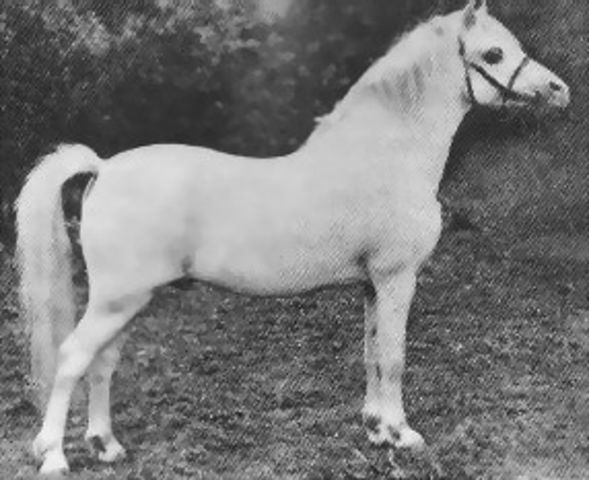
Welsh Sections A and B foundation sire Dyoll Starlight (1894), the "Welsh Skowronek."
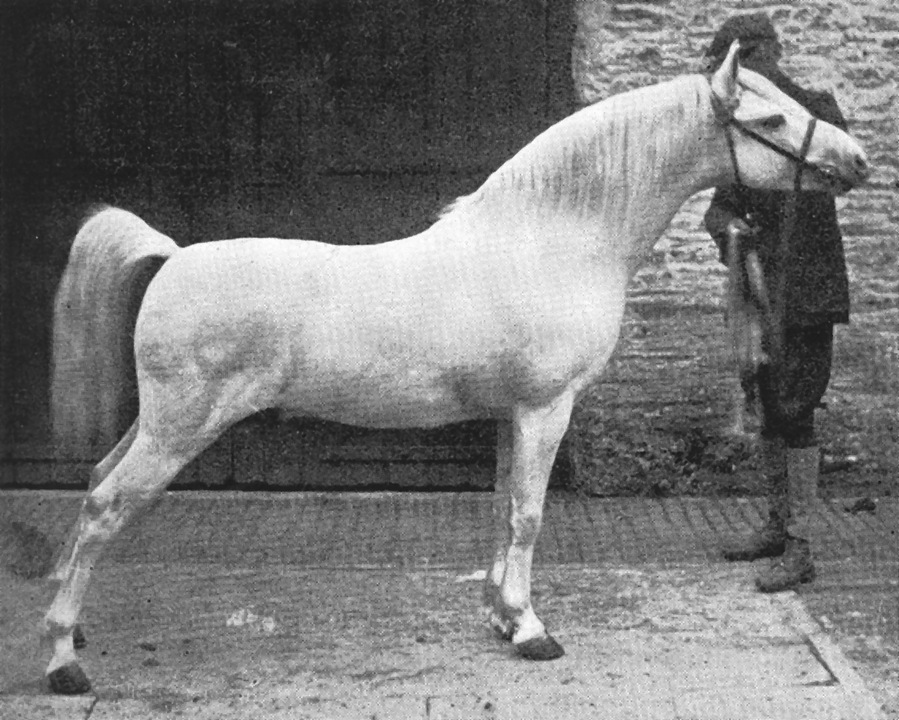
Greylight 1900 (Dyoll Starlight x Myfanwy), exported to Australia.
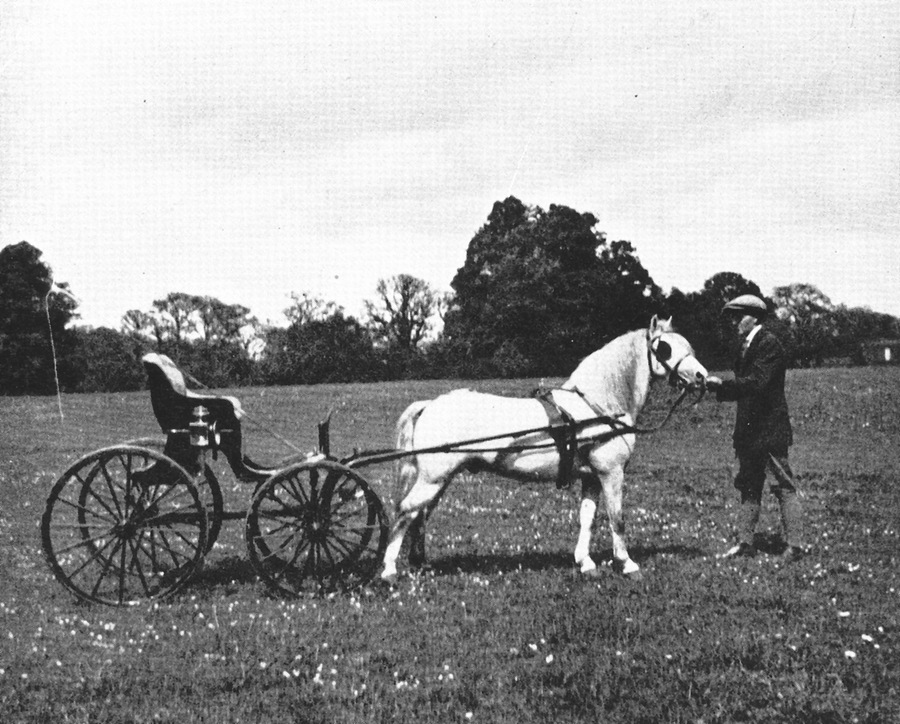
Wentworth Springlight 1920 (Dyoll Starlight x Lady Greylight by Greylight).

Dewdrop, one of Lady Wentworth’s Welsh broodmares.
Bleddfa Shooting Star 1900 (Dyoll Starlight x Alveston Belle) owned by Walter Winans, the man who discovered Skowronek.
The desertbred stallion Mootrub, as painted by Peter Upton.
Tan-y-Bwlch Berwyn 1924 (Sahara DB x Brynhir Black Star by Bleddfa Shooting Star).
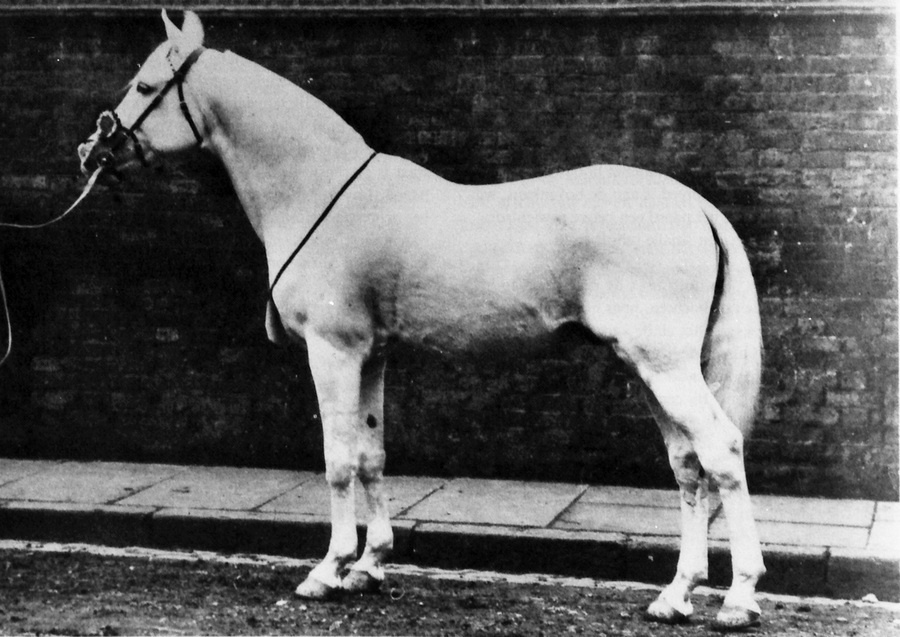
The 1905 desertbred stallion Crosbie appears in Arabian as well as Welsh pedigrees.
Lady Wentworth and Skowronek, both of whom massively influenced the Arabian breed as well as Welsh Ponies.
The Skowronek grandson Craven Cyrus 1927 (King Cyrus x Irfon Lady Twilight by Dyoll Starlight).
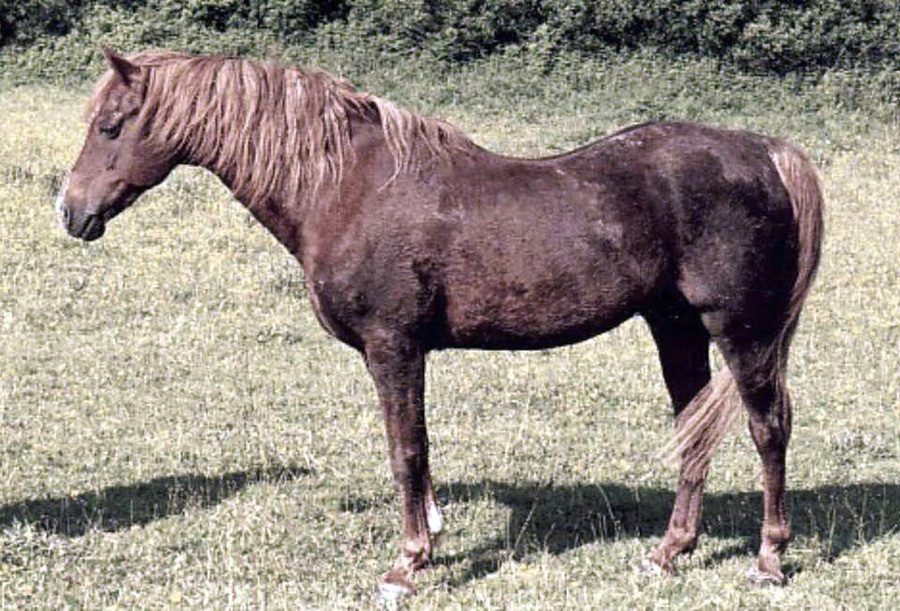
The hugely influential Welsh B stallion Downland Chevalier (1962) with two crosses to Craven Cyrus and additional lines to Dyoll Starlight.
Welsh A mare Silver Lady (1997) with numerous crosses to Craven Cyrus, Bleddfa Shooting Star, Wentworth Springlight, and Tan-y-Bwlch Berwyn. Her foal at foot is by the purebred Arabian PC Amal.
A four-in-hand of contemporary Welsh A and B Ponies.
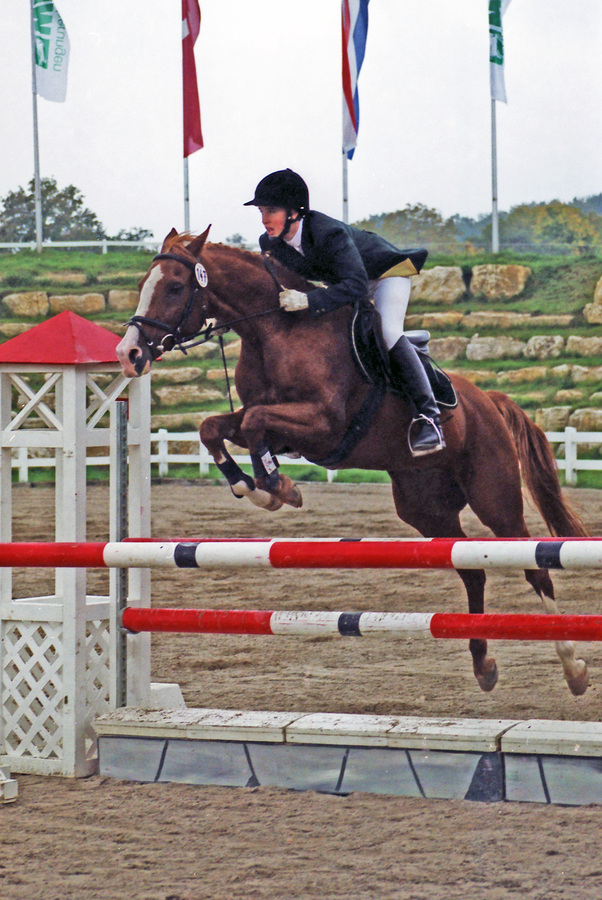
Dutch sports pony Little Dandy B (Apollo Van Heel x Nisphyi by Naivnyi) three quarters Arabian and one quarter Welsh.


